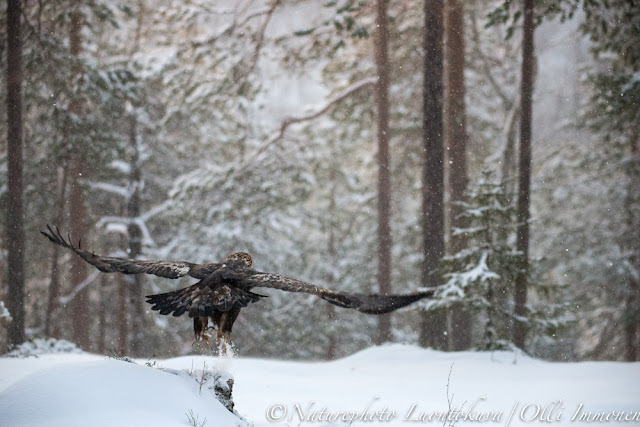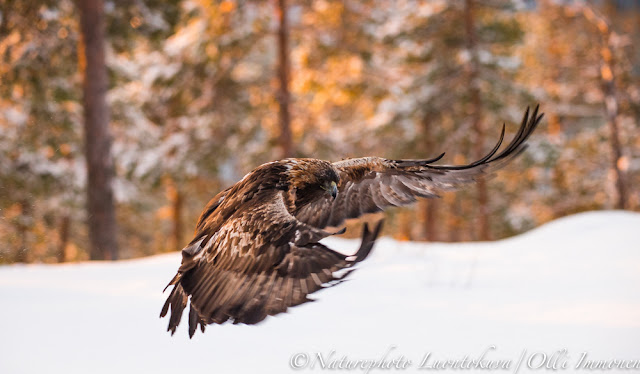Last winter in the end of January i made the reservation to Pohtiolampi. There it is possible to photograph Ospreys fishing. It is really great to watch and take photos when Ospreys are splashing into the water. It´s remarkable to see them falling with high speed into the water and catching fish. There are six different hides for photographers to watch and capture the show. From the hides you can see very well to the pond but to watch to the sky is harder. Very often the Ospreys were flying around the pond and then suddenly they made a turn to fall into the pond to catch a fish. Usually they catch a prey. The moment the Osprey falling into the water and below the water surface is really, really fast.
Pohtiolampi Osprey Center welcomes all visitors to watch ospreys' impressive preying of rainbow trout. They can be observed from a public bird-watching tower. You have also the opportunity to photograph the prey taking place at the ospreys' fish catching pond just some 40 meters away from the public tower.
Photographing the ospreys can take place also in the bird hides around the fish catching pond and in the high tower, close to the public tower.
Osprey, one of our noblest bird species, is also one of the most widely distributed species in the world. After eagles, it is our largest daytime bird of prey. Ospreys are generally well known among people for the reason that they differ greatly from our other raptors in both appearance and habits.
Osprey's diet consists almost exclusively of fish. The bird has an extraordinary way of preying its fish by plunging into the water straight from the air. Preying is always a unique and spectacular show worth watching.
The weight of prey fishes is around 300 grams. Formerly, ospreys were bitterly thought of as "fish robbers". Nowadays, however, every knowing fisherman acknowledges osprey as the undeniable king of fishing waters. Moreover, the fish caught by ospreys are often secondary to humans.
Osprey always builds its nest in the uppermost fork of a tree with an open view on the surrounding. In Finland, suitable nesting trees are usually limited to old pines having a flat crown with strong uppermost branches. Of course, other pillars rising far above the surrounding go as well. Consequently nests have been found in old geodetic towers as well as on top of sea marks, for instance. The Osprey's nest is an unbelievably messy heap generally built of dry sticks. Both the height and diameter of an osprey nest may end up being over a few meters after many years of use. Often the same nest can be used for decades.
Osprey is the provincial bird of the Häme region where near the City of Tampere in Kangasala the Osprey Center is located.
Here below is pictures from two different trips to Pohtiolampi.
Here begins the dive!
There was not a catch everytime
There were also two young Grey Herons playing
Gulls did not like it
Splish, splash
To the end two funny shots!
Olli
























































